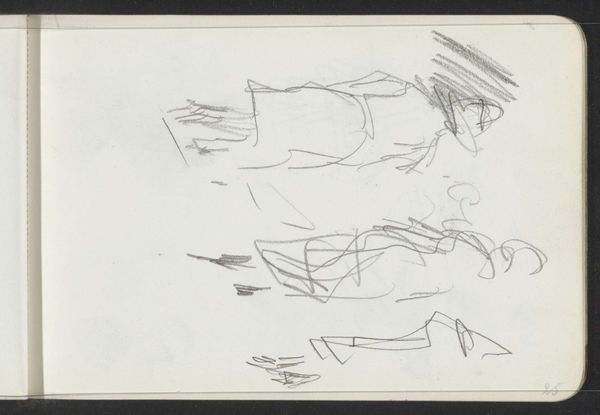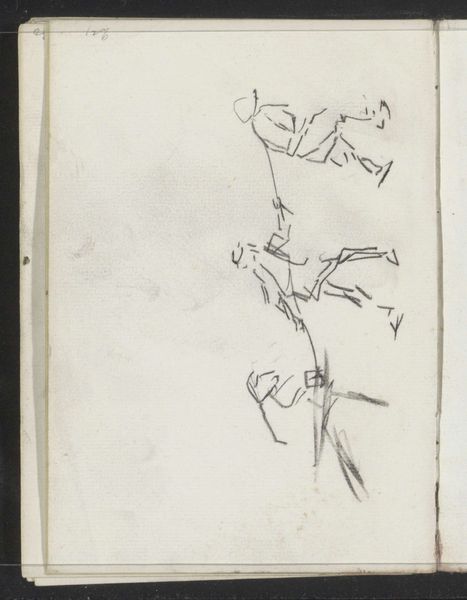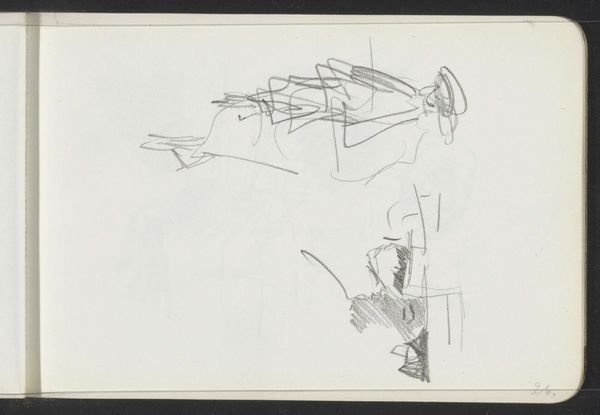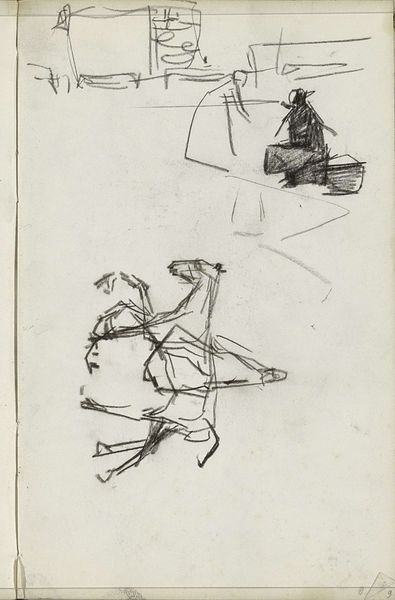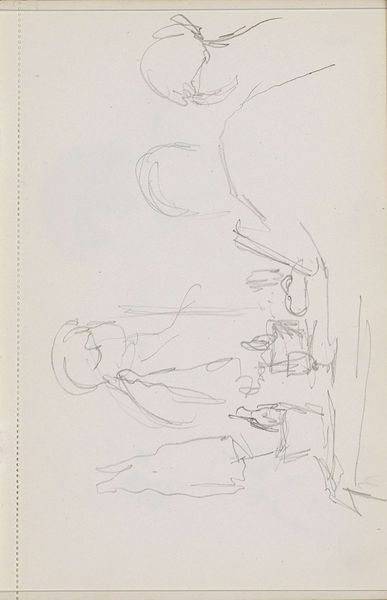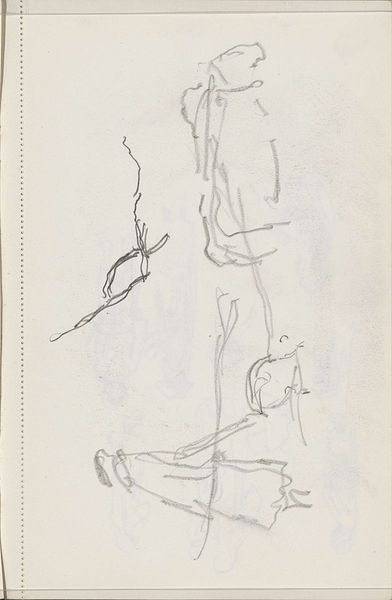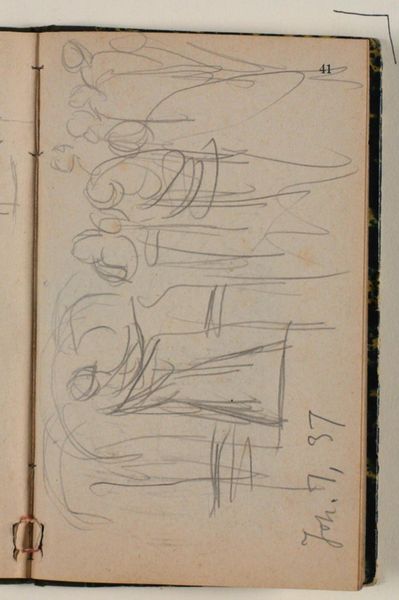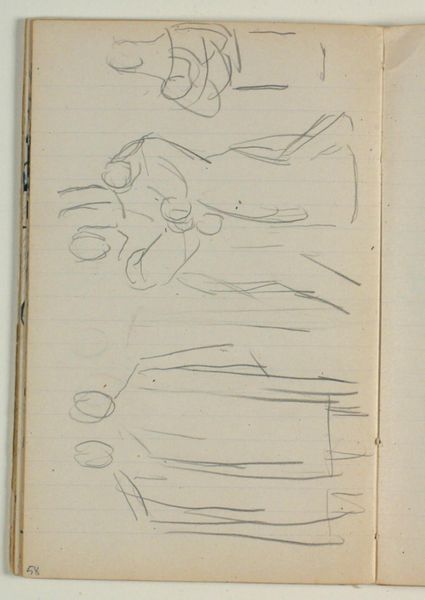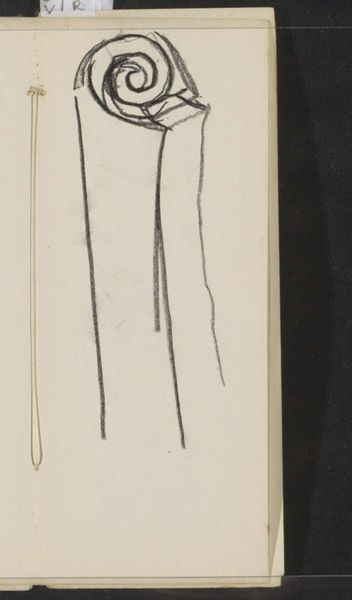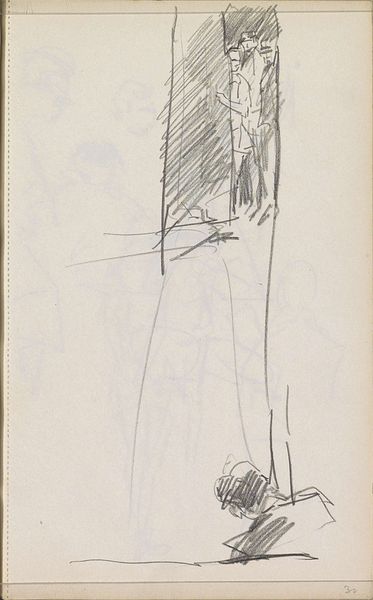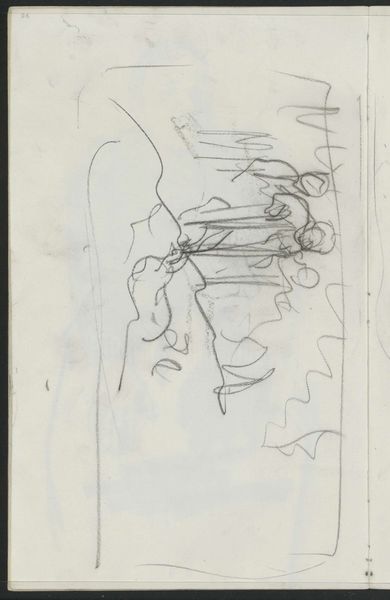
Copyright: Rijks Museum: Open Domain
Curator: Here we have a fascinating pencil drawing from the Rijksmuseum's collection: "Drie vrouwfiguren die elkaars hand vasthouden", or "Three Female Figures Holding Hands" by Carel Adolph Lion Cachet, dated sometime between 1874 and 1945. Editor: My first thought is how tentative it feels, like a half-remembered dream. The sketchy lines suggest movement, or maybe hesitation. Curator: It's certainly an intriguing work regarding process. Cachet was clearly exploring the subject. Look closely—the visible construction lines reveal the artist's thought process, the labor of creating the composition. The repeated attempts at defining the figures' posture speak to the artistic craft itself. Editor: It also makes me think about the position of women during this period, constrained by societal expectations but finding strength in each other through bonds of friendship. Are they supporting each other, or perhaps restricted by social convention and patriarchal constraint? It certainly makes one ponder ideas around dependency and mutual reliance. Curator: Perhaps it reflects both. Notice how economical the artist is with materials—just paper and pencil. This almost ephemeral quality adds to the sense of these women as existing in a transitional period, perhaps echoing shifts in the availability of materials and modes of production related to commercial life. Editor: I appreciate the delicate touch. Incomplete sketches such as these open space for us to fill in the details—they mirror the unspoken understanding and shared experiences of women who have historically been excluded from or rendered invisible by mainstream historical narratives. It raises important considerations about how we engage with stories that challenge accepted cultural or political norms. Curator: Agreed. The raw, almost unfinished quality invites speculation about Cachet’s intention and working methodology. He is capturing the energy of this social tableau on paper. Editor: I think looking at this sketch forces us to grapple with the historical positioning of women, questioning their representation in visual culture and the complexities of female alliance, both historically and in the contemporary landscape. Curator: Seeing the stages of artistic construction can be revealing in thinking about gender expression. Thanks for shedding that light on this interesting drawing. Editor: Thank you. The act of viewing then, also, can become an intervention.
Comments
No comments
Be the first to comment and join the conversation on the ultimate creative platform.

